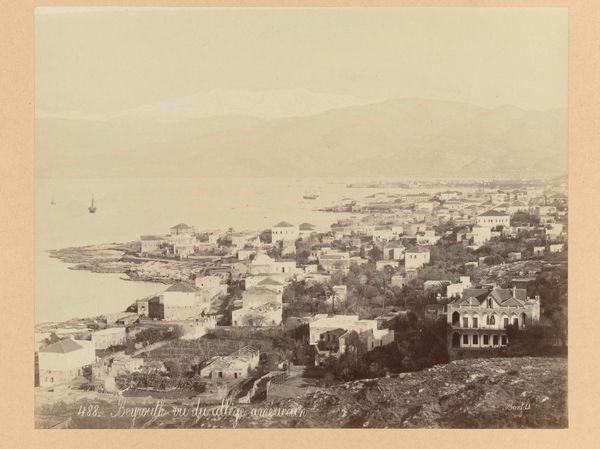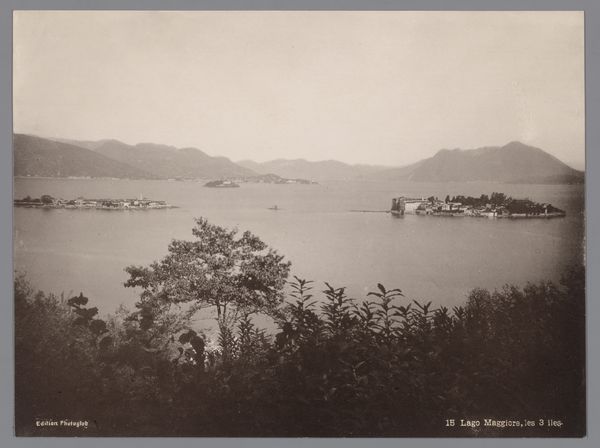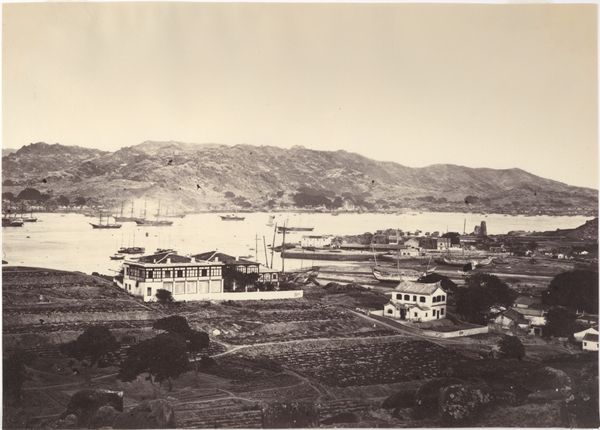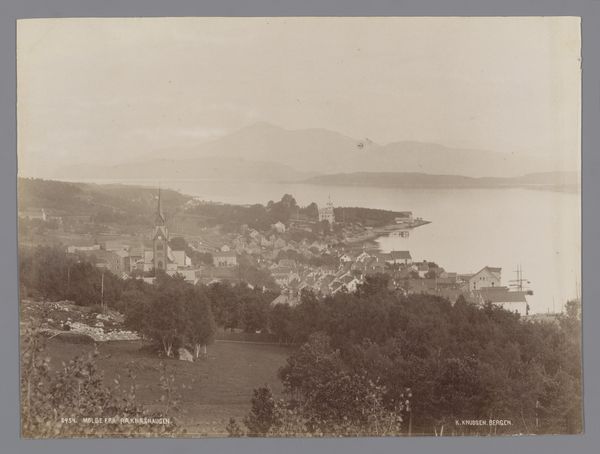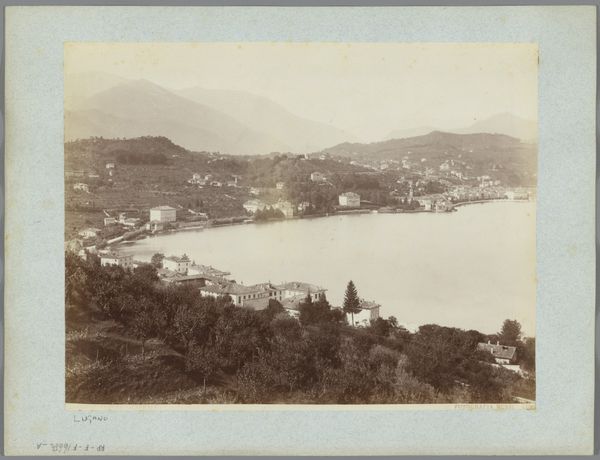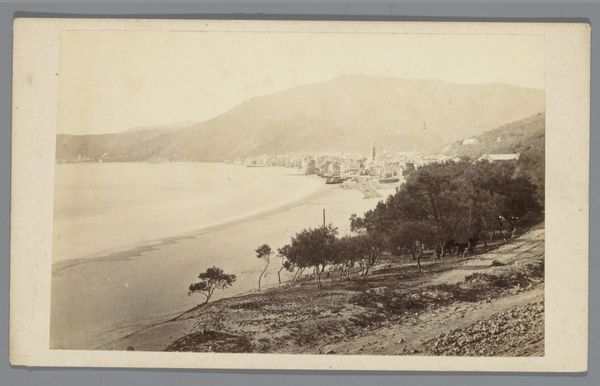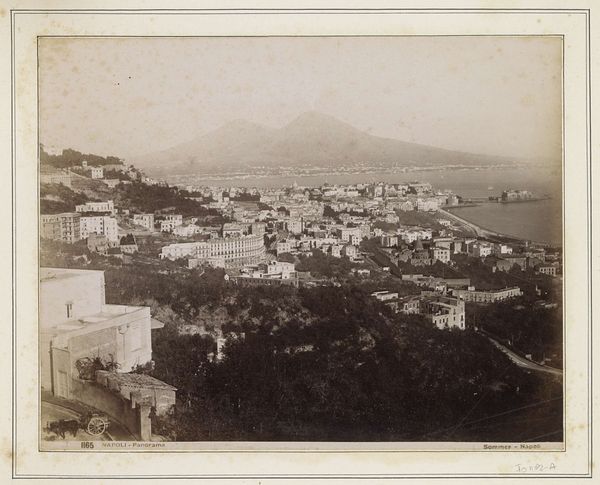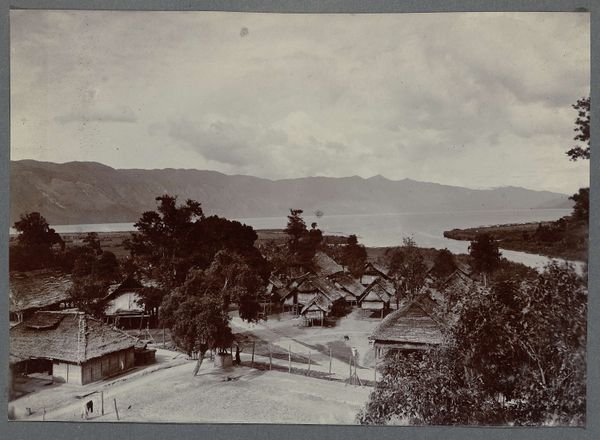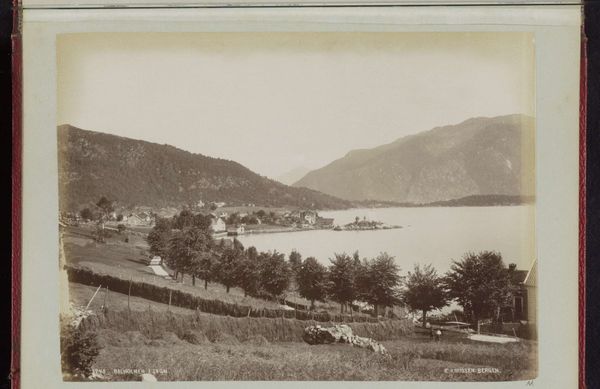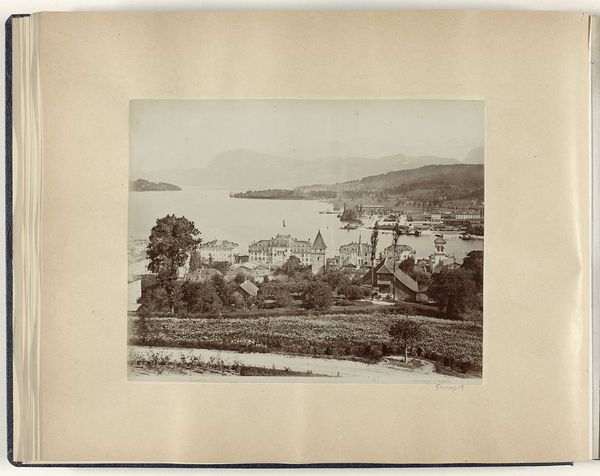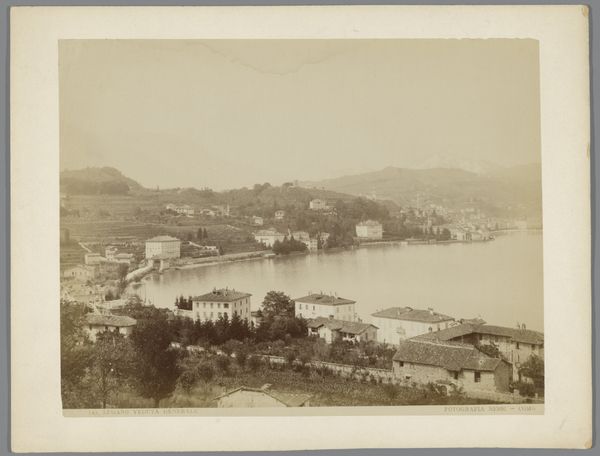
Stadgezicht van Ajaccio gezien vanaf een hoger gelegen gedeelte c. 1886 - 1896
0:00
0:00
henrypauwvanwieldrecht
Rijksmuseum
photography
#
landscape
#
nature
#
photography
#
cityscape
Dimensions: height 170 mm, width 230 mm, height 322 mm, width 498 mm
Copyright: Rijks Museum: Open Domain
Editor: This photograph, entitled "Stadgezicht van Ajaccio gezien vanaf een hoger gelegen gedeelte" – that's "Cityscape of Ajaccio Seen from an Elevated Position" – was taken sometime between 1886 and 1896. It captures the French city using photography. The muted tones and the rather distant perspective give it a sense of objective observation, almost like a geographical survey. What historical insights do you draw from this photograph? Curator: It’s interesting you describe it as objective. Photography during this period occupied a complex space. It aspired to scientific accuracy but was simultaneously being used to construct narratives about place, progress, and empire. What strikes me is the inclusion of the ships in the bay. Can you consider their purpose and effect? Editor: Well, the ships add to the sense of a bustling port city, suggesting trade and connection. I guess it speaks to Ajaccio’s role within France’s, and potentially other nations’ broader economic and perhaps even political strategies in the Mediterranean? Curator: Precisely. Photography became a powerful tool for visualizing and promoting colonial power and commercial networks. These cityscapes, presented as neutral documents, often subtly reinforced particular ideologies. The elevated perspective itself can be interpreted as a form of visual dominance, a claiming of territory through the act of seeing and recording. Does knowing this perhaps change your initial reading of the piece as simply an objective geographical record? Editor: Absolutely. I was initially caught up in the aesthetic and the documentary feel, but now I recognize a possible dimension to this work, consciously or not framing the city and perhaps alluding to an imperial presence. I guess photography from this era can be powerful propaganda. Curator: It highlights the importance of questioning the context in which images are made and circulated. Visual culture always carries embedded meanings shaped by political and social forces. Editor: Definitely given me lots to consider! The image now appears as a subtle and strategic declaration, rather than a mere portrayal.
Comments
No comments
Be the first to comment and join the conversation on the ultimate creative platform.
